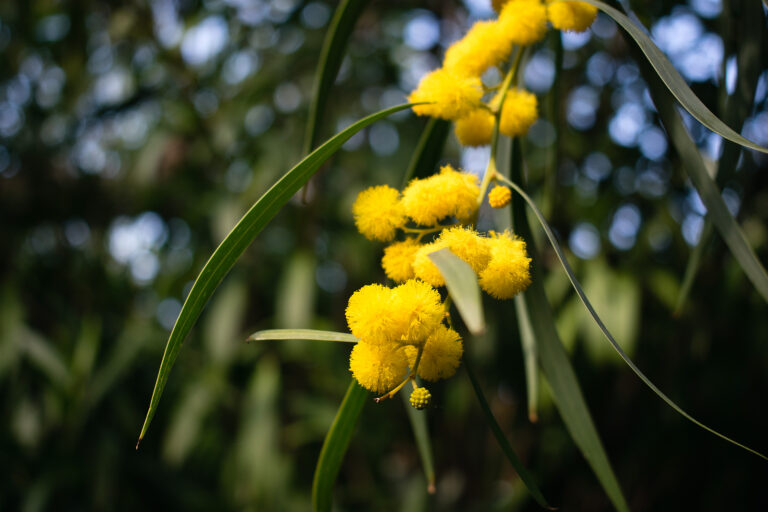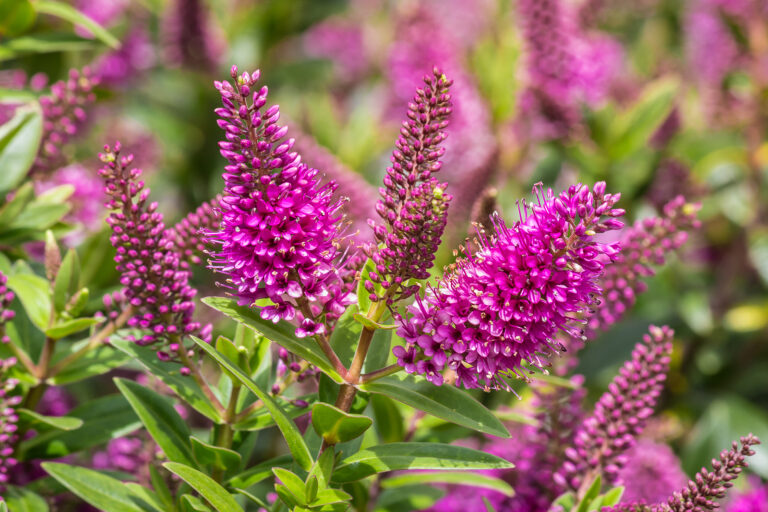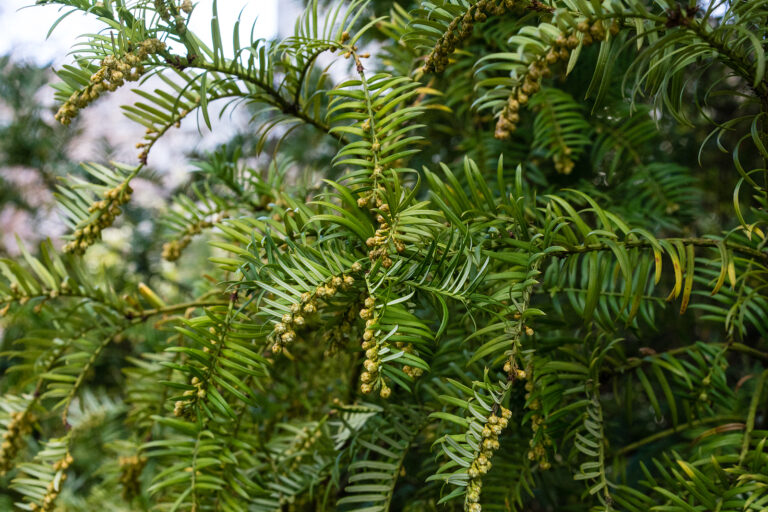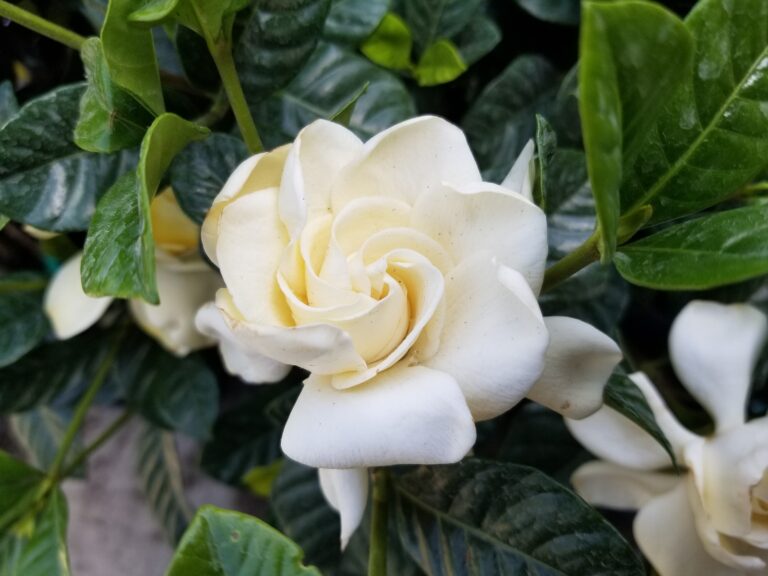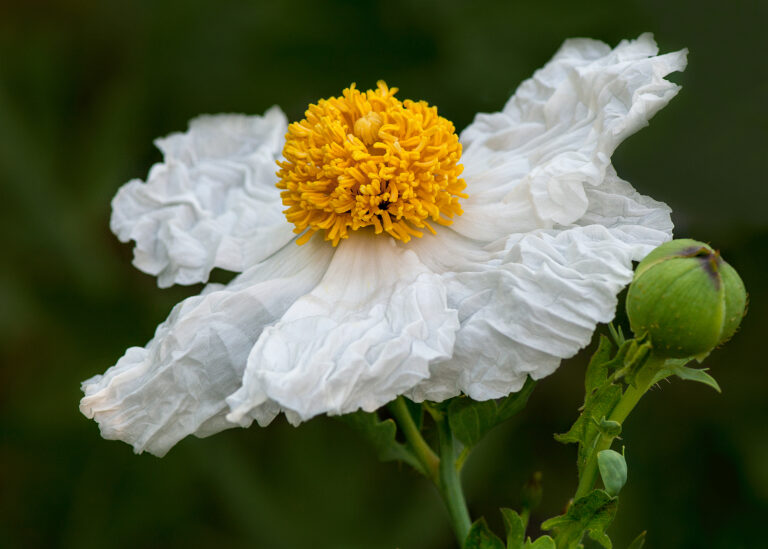How to Grow Camellias
Camellia is an evergreen shrub or tree that bears showy single, semi-double, or fully double flowers in shades of white, pink, or red, in late winter or early spring.
Camellia produces large rose-like flowers. Camellia sasanqua flowers open in late fall and early winter; Camellia japonica blossoms in late winter and early spring. The lush, glossy, dark green leaves are beautiful year-round.
Some Camellia varieties are low-growing and spreading in form, some are shrubs, and others are tree-like and can be trained to a single trunk. Almost all develop a fully rounded form that is covered with blossoms once a year. Camellia flowers hold their shape and color for extended periods.
Camellia flowers take many forms; they include (1) single with one row of up to 8 petals and prominent stamens; (2) semi-double with 2 or more rows of larger outer petals and a center composed of loose petals and stamens; (3) anemone-form with one or more rows of outer petals and intermingling petaloid and stamens in the center; (4) peony form with a context mass of irregular petaloid, petals, and stamens; (5) rose-form double with overlapping petals showing stamens in a concave center when fully open (6) formal double with a row of overlapping petals and no stamens visible.
Tools for Gardeners at Amazon:
- A.M. Leonard Straight Rake with Ash Handle
- All-Steel Nursery Spade with D-Grip Handle
- 4-Tine Spading Digging Fork with D-Handle
- Digital Soil pH Meter Outdoors Greenhouse
- Earthwise Handheld Electric Fertilizer Spreader
Camellia is a genus of more than 250 species of long-lived evergreen shrubs and small trees. Camellias are native to acidic soil in woodland areas of North India, the Himalayas, China, and Japan. Camellias have been extensively hybridized.

Get to know Camellia
- Plant type: Evergreen shrub
- Growing Zones and range: Zones 6-11
- Hardiness: Half-hardy
- Height and width: 1 to 15 feet tall and 3 to 15 feet (1-4.6m) wide
- Foliage: Glossy, leathery, mid-to dark green leaves lance-shaped to elliptic
- Flowers: Camellia flowers may be single with one row of up to 8 petals and prominent stamens usually saucer-shaped; semi-double with 2 or more rows of petals; other forms are anemone-form, peony-form, rose-form, and formal double. Flower colors include white, pink, and red; some varieties are two-toned.
- Bloom time: Spring, summer, or fall depending on the variety
- Uses: Specimen, foundation plant, hedge, cutting
- Common name: Camellia
- Botanical name: Camellia spp.
- Family: Theaceae
- Origin: The Himalayas to China, Japan
Where to plant Camellia
- Camellia grows best in partial shade but will tolerate full shade and full sun in regions that do not get too hot in summer
- Grow camellia in humus-rich, moist, acidic soil
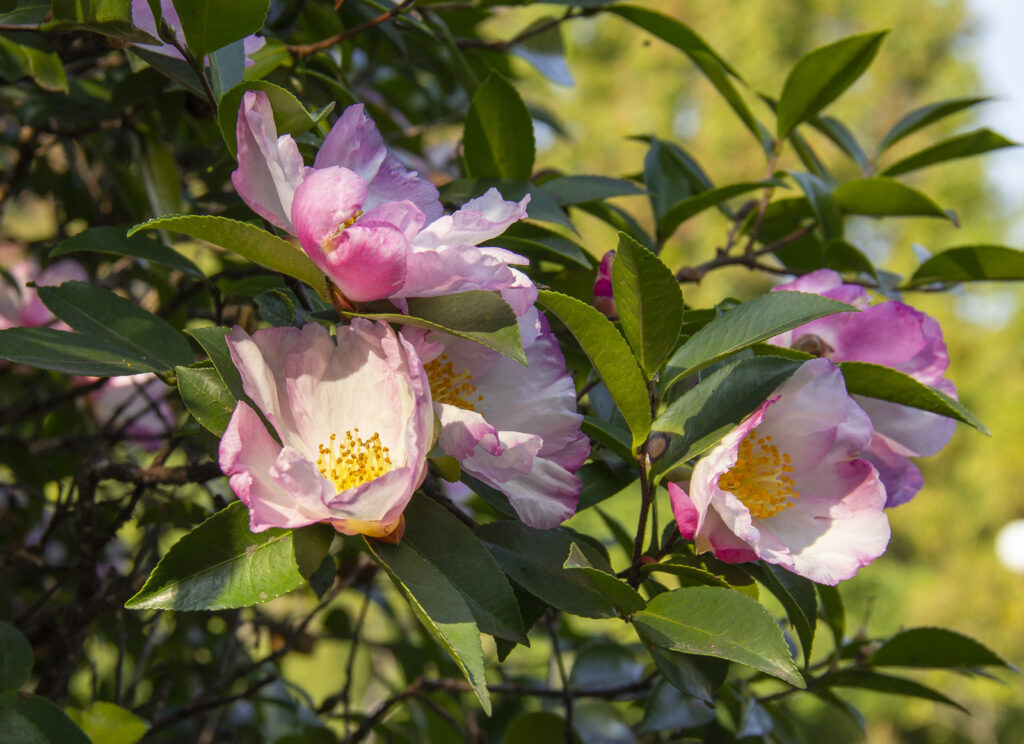
When to plant Camellia
- Set container-grown camellias in the garden in spring or fall.
Planting and spacing Camellia
- Space camellias 3 to 15 feet (1-4.6m) apart depending on the variety
How to water and feed Camellia
- Camellias want ample moisture; keep the soil evenly moist. Pay close attention to soil moisture for the first three years, after that plants will survive on rainfall or occasional irrigation.
- Fertilize camellias less than 8 feet (2.4m) tall every 6 to 8 weeks with an acid plant food. Do not over-fertilize.
Camellia care
- To produce larger flowers, remove all but one bud flower bud in a cluster.
- After the plant has flowered cut it back to encourage compactness. Use the prunings to propagate new plants.
- Mulch around camellias to conserve soil moisture.
- Prune camellias immediately after flowering. Cut out dead or weak wood. Shape the shrub and thin growth as desired.
- Camellia is prone to disease if the soil is poorly drained or if there are excessive salts in the soil.
- Camellias are prone to petal blight; pick up fallen leaves or petals to control petal blight.
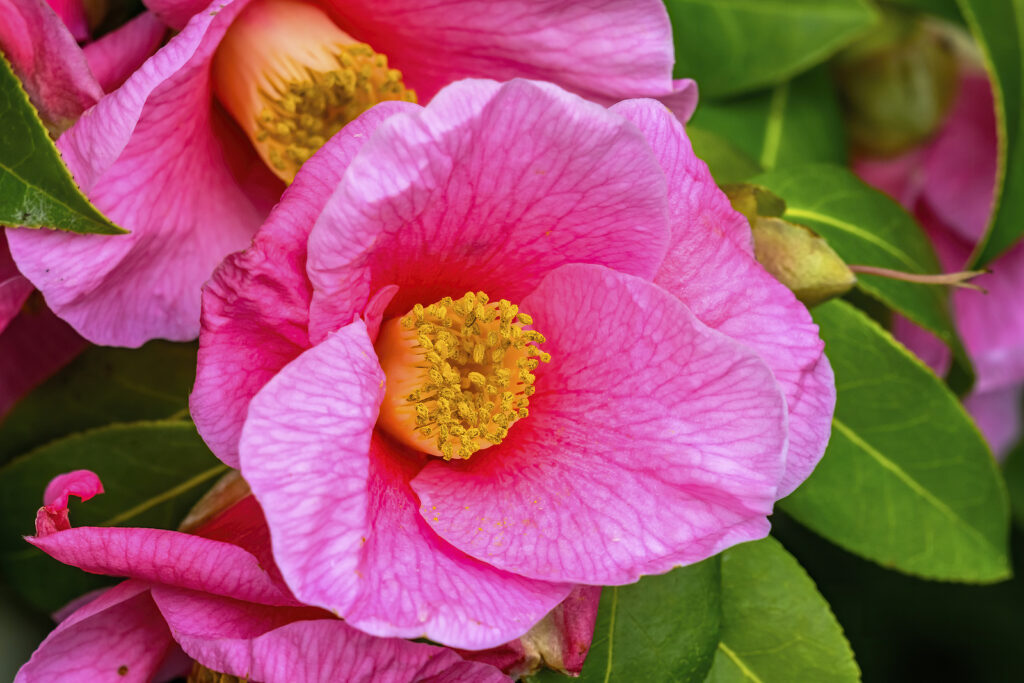
Growing Camellias as a houseplant
- Camellia varieties grown indoors include Camellia japonica, C. reticulata, and C. sasanqua.
- Grow camellia where temperatures are cool, humidity is average to high and light is bright.
- When camellias are in bloom, a cool temperature and high humidity will prolong the life of the flowers and prevent bud drop.
- Potting medium must be extra rich, well-drained, and kept constantly moist.
- Fertilize camellias with plant food for acid-loving plants in early spring, late spring, and midsummer.
- Camellias will benefit from being placed outdoors in summer in light shade.
Camellia pests and diseases
- Pests include spider mites, scale, weevils, and aphids.
- Sooty mold grows on dropping from scale insects and aphids.
- Canker, dieback viruses, root rot, leaf spot, and anthracnose.
- Camelia petal blight is caused by a fungus that damages blooms.
Camellia propagation
- Root leaf bud or semi-ripe cuttings of the current year’s growth from midsummer to late winter.
- Air-layer in late spring.
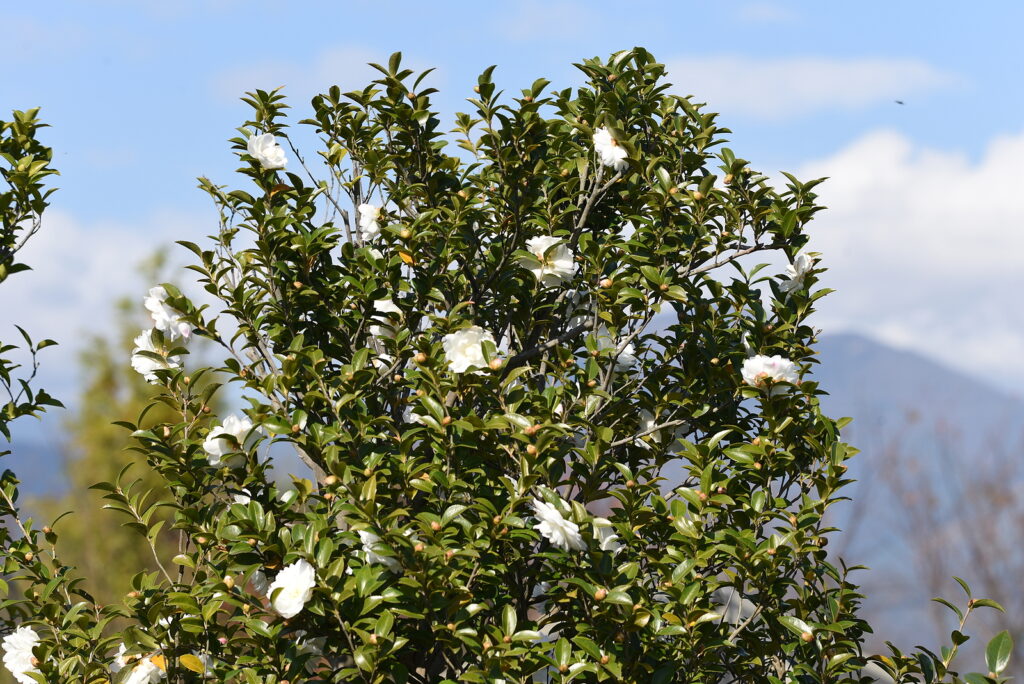
Camellia varieties to grow
- There are several varieties and dozens of camelia cultivars.
- Camelia japonica, common camelia, Japanese camellia. Hardy to Zones 8-11; an upright, dense shrub that has thick, oval, 3- to 4-inch leaves; flowers are 3 to 5 inches across and bloom in late winter and spring; cultivars include ‘Bob Hope’, ‘China Doll’, ‘Elegans’, ‘Jordan’s Pride’, ‘Kramer’s Supreme’, ‘Marie Bracey’, ‘Nuccio’s Gem’, and ‘Pink Perfection’.
- Camelia reticulata, net-vein camellia. Open-branched small tree or shrub has 4-inch leaves with prominent veins.
- Camelia sasanqua, Sasanqua camellia. Hardy to Zones 7-11; loose, spreading shrub with slender 2-inch leaves; bears fragrant, single cup-shaped flowers 2 to 3 inches across; blooms in fall and winter; cultivars include ‘Bonanza’ and ‘Yuletide’
- Camelia sinensis is a shrub or tree that can grow 15 feet tall or more.
Camellia frequently asked questions
Q: How do I grow a camellia in a pot?
A: Place the potted camellia in light shade in summer. In frigid winter regions, bring it indoors in autumn. The night temperature should be 50°F. In winter the plant can have full sun. Keep the soil evenly moist but not waterlogged. Feed the plant once a week during the growing season with an all-purpose organic fertilizer.
Q: Can a camellia be grown in the house?
A: Camellias are not good house plants unless you can keep them in a cool room. In the wintertime, they will be harmed by temperatures greater than 50° to 60°F.
Q: What soil mixture should I use for a potted camelia?
A: The soil should consist of good loam, leaf mold, and sharp sand, with aged compost, after potting spray the plant frequently and avoid overwatering.
Q: How old do camellias have to be in order to bloom?
A: Camellias often bloom when quite young–3 or 4 years old.
Q: How do I prune a camellia?
A: Prune a camellia only to keep the plant shapely. Thin crowded plants by removing weak growth. Cut back any long straggly shoots. Prune after flowering. Flowering shoots for the following year arise from the base of this year’s flowers; cutting back flowering shoots will destroy next year’s bloom.
Q: Why do buds drop from a camellia plant?
A: Buds can drop because the temperature is too warm and the atmosphere too dry, as well as a lack of moisture and light.
Q: How are camellias propagated?
A: Camellias are propagated by cuttings, grafting, and layering. Mid-summer is a good time to take cuttings for propagation.
Related Articles:


